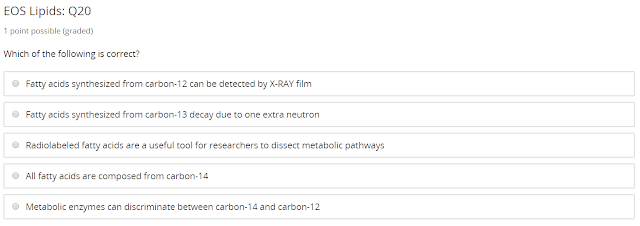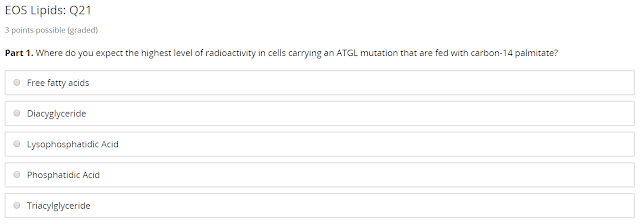This whole exercise is about experimental techniques - have fun!
Radiolabeled fatty acids are a useful tool for researchers to dissect metabolic pathways.
Triacylglyceride - because AGTL is not functional to turn Triacylglyceride to diacylglyceride.
Triacylglyceride - because ABHD5 cannot activate AGTL to turn Triacylglyceride to diacylglyceride.
I have a hard time to remember this one - I googled, the answer is:
Lysophosphatidic Acid - because AGPAT turns Lysophosphatidic Acid to Phosphatidic Acid.
Oleic acid is simply a fatty acid with 18 carbons, therefore the answer is:
Feed the cells with carbon-14 oleic acid and determine radioactivity in triacylglyceride relative to nonmutant cells. correct
The way to read this is that the left hand side is showing us there is a difference in these different material's polarity causing a drift in the dot. The control cell has turn all free fatty acid into triglyceride, but the mutant cell stopped at the diacylglyceride stage, which means it has problem turning diacylglyceride to triglyceride, that proves the hypothesis there is a problem with triglyceride synthesis, the answer is
My observed result matched the result predicted by my hypothesis. Therefore, the data support my hypothesis and suggest my hypothesis is correct.
As long as a wish to just click "a biochemistry college professor" or "a computer engineer who led a relatively sedentary lifestyle", the lack of physical activity has a hard time to explain why lipid is not going away in 50 years!
The only sensible option is that his body cannot get rid of lipid at all - the answer would be a patient suffering from a neutral lipid storage disease.









No comments:
Post a Comment